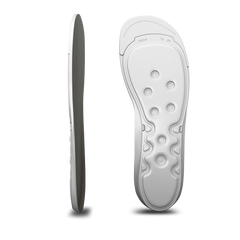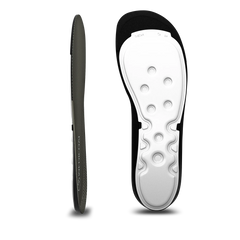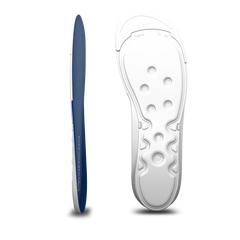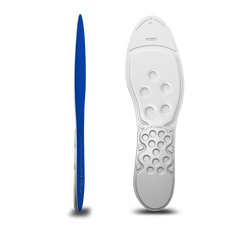5 Most Common Causes of Pain Under the Shoulder Blade, Tips for Suitable Exercises

Pain under the shoulder blades is a common and often unpleasant health issue that can be caused by a variety of factors. From muscle strain to more serious health conditions, it's important to identify the cause in order to choose the most effective treatment. Here are the five most common causes of pain under one or both shoulder blades:
Muscle Strain

Pain under the shoulder blades, which trouble many of us, can have various causes, but one of the most common is undoubtedly muscle strain. This issue can arise from different activities or habits that put strain on the back muscles, especially those located around and under the shoulder blades.
What causes muscle strain?
Muscle strain can result from a one-time overexertion of muscles. For example, lifting heavy objects using an improper technique. It can also be caused by long-term excessive strain, like sitting at a computer for long periods in an improper position. Inadequate ergonomics in the workplace can also contribute to this problem as well as not enough breaks when doing sedentary work. And don’t forget that incorrectly performed exercises at the gym can cause muscle strain.
Symptoms of muscle strain:
- Pain, which can be dull or burning;
- Restricted mobility in the affected area;
- The feeling of stiffness and pain may worsen when trying to move or change body position.
How can you prevent muscle strain?
- Regular breaks during work requiring long periods of sitting;
- Exercises to strengthen back muscles and improve flexibility;
- Ensuring that the work and exercise environment is correctly set up ergonomically.
Treatment of muscle strain includes:
- Rest and avoid activities that worsen the pain;
- Applying heat or cold to the affected area can help relieve pain and inflammation;
- Warm baths or cooling gels and creams can be used to bring relief;
- Gentle stretching exercises and massages can also help loosen tight muscles and improve circulation in the affected area.
When is it time to seek medical attention?
If pain under the shoulder blades persists or gets worse after home treatment, it's important to seek medical help. A doctor may recommend further therapies, such as physiotherapy, pain relievers, anti-inflammatory drugs, or in case of more serious causes, specialized treatment. Muscle strain under the shoulder blades is a problem that requires attention and proper care. Regular exercise, proper ergonomics, and appropriate responses to the initial symptoms can significantly help prevent and even treat this common cause of pain.
Tendonitis
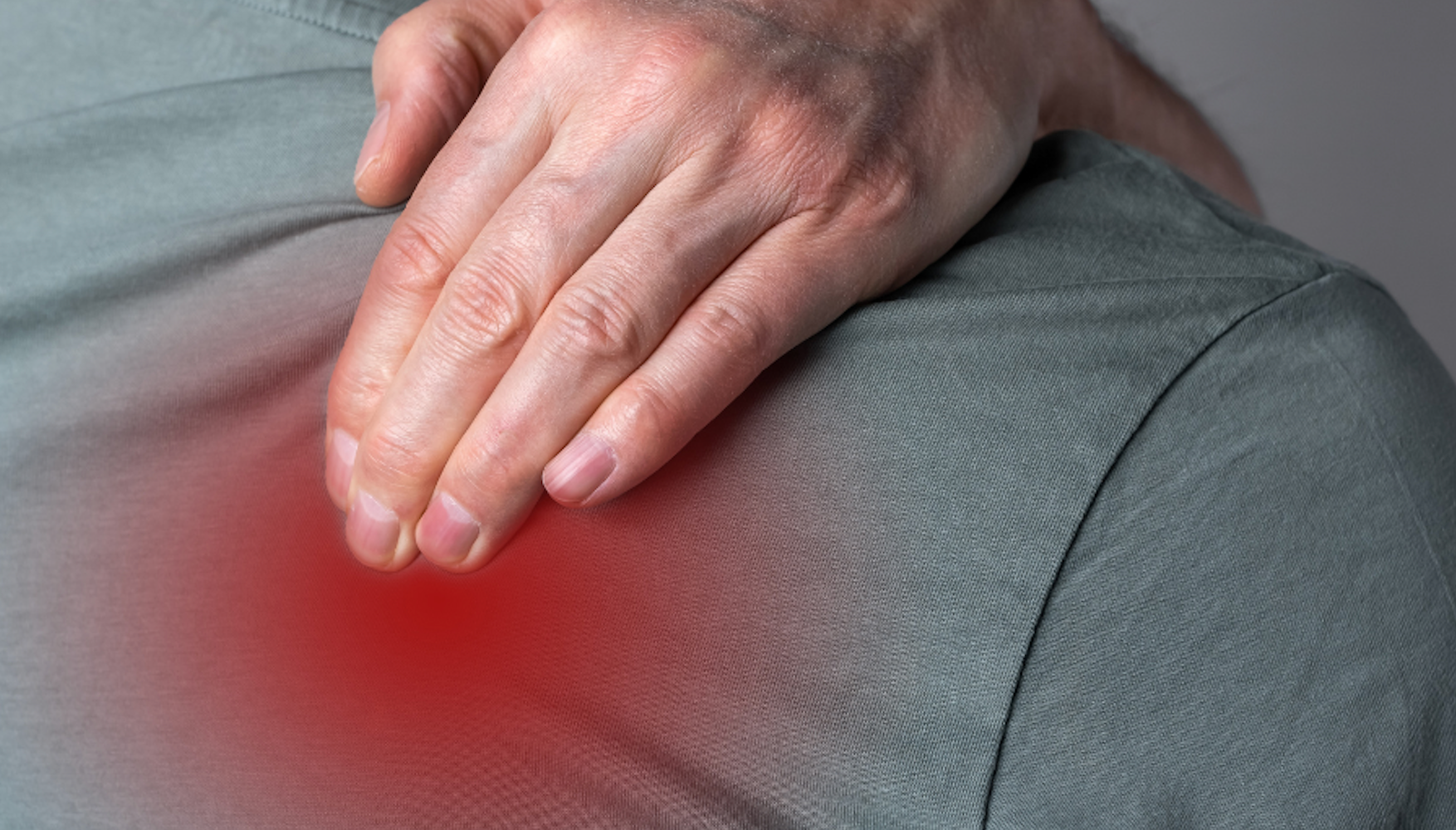
Pain under the shoulder blades can not only be uncomfortable but can also be a sign of a more serious problem, such as tendonitis. This condition, also known as tendinitis, affects the tendons in the shoulder girdle area and can significantly limit mobility and the quality of life of the sufferer.
What causes tendonitis in the shoulder area?
Tendonitis is often a result of repeated or excessive movements that lead to strain on the tendons in the shoulder area. These movements can include excessive exercise, working with hands above the head, or sports activities requiring repeated throws or strikes. Long-term or repeated strain without adequate rest can lead to micro-tears in the tendons, triggering an inflammatory response.
Symptoms include:
- Pain in the shoulder area, which can spread under the shoulder blade;
- Swelling, redness, and restricted mobility in the affected area;
- The pain often worsens with shoulder movement or when touching the affected area.
Prevention
- Regular breaks during work or activities that strain the shoulder girdle;
- Using the proper technique when performing physical activities;
- Warming-up before exercising;
- Strengthening muscles around the shoulders can also reduce the risk of tendinitis.
Treatment involves:
- Rest and limiting activities that cause pain or worsen symptoms;
- Applying ice to the affected area can help relieve pain and inflammation;
- Physical therapy is often recommended to improve flexibility and strengthen the muscles around the shoulders, which can help alleviate strain on the tendons;
- In some cases, treatment with anti-inflammatory drugs or pain relievers may be necessary to alleviate symptoms.
When is it time to seek medical attention?
If home treatment methods do not bring relief or if symptoms worsen, it's important to seek medical help. A doctor may recommend further treatment, such as corticosteroid injections for quicker relief from inflammation, or in rare cases, surgical repair of damaged tendons. Tendonitis is a serious health condition that requires attention and treatment. With proper prevention and timely intervention, long-term complications may be avoided and a quicker recovery can be ensured.
Intercostal Neuralgia
Intercostal neuralgia is a less known but very painful condition that affects the intercostal nerves located between the ribs. This condition can result in intense pain in the chest area, which can spread under the shoulder blades. Understanding the causes, symptoms, and treatment options are key to effectively managing this condition.
What causes this condition?
Intercostal neuralgia can be caused by various factors that irritate or inflame the intercostal nerves. Common causes include:
- Injury: Chest injuries can cause direct damage to the intercostal nerves.
- Infection: Some infections, such as herpes zoster (shingles), can affect the intercostal nerves and cause neuralgia.
- Nerve compression: Herniated discs or other conditions leading to nerve compression can trigger the type of pain characteristic of intercostal neuralgia.
Symptoms can vary, but typically include:
- Sharp, burning pain: The pain can be acute and is often described as burning or stabbing.
- Pain is worsened by movement: Coughing, deep breathing, or even moving position intensify the pain.
- Pain is localized in the chest area and under the shoulder blades: It can spread along the affected nerve.
Treatment
Treatment of intercostal neuralgia is focused on relieving pain and inflammation, as well as addressing the underlying cause of nerve irritation. Common treatment strategies include:
- Pain relief medications: From non-steroidal anti-inflammatory drugs (NSAIDs) to stronger analgesics prescribed according to the intensity of the pain.
- Relaxation techniques: Techniques to relax muscles and improve blood circulation in the affected area can help relieve the pain.
- Physical therapy: Specifically designed exercise programs can help loosen tightened muscles and relieve pressure on the affected nerves.
- Nerve blocks: In some cases, direct blocking of the nerve through injections can be useful in reducing the pain.
When is it time to seek medical attention?
If you are experiencing symptoms of intercostal neuralgia, it's important that you consult a healthcare professional, especially if your symptoms are long-lasting or they worsen. The correct diagnosis and early treatment can prevent a worsening of the condition and ensure more effective pain relief. Although less known, intercostal neuralgia is a serious and painful condition that requires proper attention and treatment. With a comprehensive approach to treatment and the right support, significant pain relief and quality of life improvements can be achieved for individuals suffering from this condition.
Osteochondrosis
Osteochondrosis is a degenerative disease affecting bones and cartilage, most commonly in the spine area. This condition can cause pain and discomfort, manifesting in various parts of the body, including under the shoulder blades. Understanding the complexity of the disease and its impact on daily life is important for understanding its causes, symptoms, and available treatment options.
Causes
Osteochondrosis develops as a result of the degeneration of discs between the vertebrae, which can be caused by a number of differewnt factors, including:
- Age: Degenerative changes are often part of aging.
- Mechanical stress: Long-term excessive strain on the spine due to incorrect posture or being overloaded during work and/or sports.
- Genetic predisposition: The risk of developing osteochondrosis may be increased by a family history of degenerative spine diseases.
Symptoms
Symptoms of osteochondrosis can vary and depend on the location of the degenerative changes. When affecting the cervical or thoracic area of the spine, it can lead to:
- Pain under the shoulder blades: The pain can be dull or sharp, often worsening with certain movements or positions.
- Stiffness and restricted mobility: Affected areas may be stiff, making movement difficult.
- Radiating pain: In cases of cervical osteochondrosis, the pain may radiate out to surrounding areas, including the hands and fingers.
Treatment
Treatments of osteochondrosis focus on relieving pain, restoring function, and stopping or slowing down the degenerative process. Main treatment strategies include:
- Physical therapy: Exercises to strengthen muscles and improve flexibility can help stabilize the spine and relieve pain.
- Medication: Anti-inflammatory and pain-relieving drugs may be prescribed to alleviate acute pain.
- Ergonomic adjustments: Changes in working and living environments, including ergonomic chairs and mattresses, can help reduce strain on the spine.
- Alternative methods: Additional relief from pain can be achieved with acupuncture and massages.
When is it time to seek medical attention?
If you experience persistent or worsening pain in the spine area or under the shoulder blades it's important to consult a healthcare professional. Early diagnosis and proper treatment can improve prognosis and quality of life. Osteochondrosis, although a chronic and progressive condition, can be effectively managed through a comprehensive approach to treatment. Maintaining an active lifestyle, regularly performing specifically designed exercises, and following professional recommendations can significantly contribute to symptom relief and an improvment in overall health.
Heart Disease and Pain Under the Shoulder Blades
Heart disease is among the most common causes of death worldwide. Although pain under the shoulder blades is not the most common symptom, in certain cases it can indicate a serious heart problem, such as myocardial infarction. Recognizing the connection between pain in this area and potential heart disease can be key to an early diagnosis and treatment, saving lives. Pain under the shoulder blades can be a nonspecific symptom that occurs in a variety of medical conditions, including heart disease. In some heart problems, such as angina pectoris or myocardial infarction (heart attack), pain can radiate out to the area of the shoulder blades, causing an unexpected and unusual sensation of pain.
Symptoms and warning signs include:
In heart disease, pain under the shoulder blades may be accompanied by other symptoms, and these should be considered serious warning signs:
- Chest pain: Pressure, squeezing, or pain in the center of the chest that may last several minutes or repeatedly returns.
- Shortness of breath: Sudden shortness of breath or difficulty breathing without an obvious reason.
- Feeling of fatigue: Unusual fatigue or weakness that may be present for several days.
- Other symptoms: Cold sweat, nausea, or dizziness.
When is it time to seek medical attention?
If you experience pain under the shoulder blades along with any of the above symptoms, it's vitally important that you seek medical help immediately. A quick response with the proper treatment can save your life and minimize damage to your heart muscle should you be having a heart attack.
Prevention involves continuous monitoring:
Preventing heart disease includes a healthy lifestyle, regular medical check-ups, and monitoring cardiovascular risk factors, such as high blood pressure, high cholesterol, and diabetes. Basic steps to protect heart health are physical activity, a healthy diet, maintaining a healthy body weight, and avoiding smoking. In case of any suspicions or uncertainties, it's important to consult with your doctor, who can provide the proper examinations, tests, and recommendations. Remember, when it comes to heart disease, prevention, early diagnosis, and treatment are key to long-term health and life.
Exercises for various types of pain under the shoulder blades:
Stretching Exercises
Stretching the upper trapezius and cervical spine:
- Sit or stand, keeping your back straight.
- Tilt your head toward one shoulder, while gently pressing on your head with the other hand for a deeper stretch.
- Hold the position for 20–30 seconds, then repeat on the other side.
Stretching the scapular muscles:
- Stand and interlace your hands behind your back.
- Slowly lift your hands upward, keeping your back straight until you feel a stretch in the front of your shoulders and chest.
- Hold the position for 20–30 seconds.
Strengthening Exercises
Strengthening the rotator cuff:
- Hold a dumbbell in one hand, stand sideways to a door with a band attached to the doorknob.
- Pull your arm toward your body keeping your elbow at a 90-degree angle.
- Perform 10–15 repetitions on each side.
Strengthening muscles around the shoulder blades:
- Lie on your stomach, extend your arms in front of you.
- Lift your arms and legs simultaneously, as if you were swimming the breaststroke, and focus on squeezing your shoulder blades together.
- Perform 10–15 repetitions.
Relaxation Exercises
Using a foam roller:
- Use a foam roller for a back massage and the area under the shoulder blades.
- Roll along the back and focus on areas of high tension.
Diaphragmatic breathing:
- Lie on your back, place one hand on your stomach and the other on your chest.
- Focus on deep breathing with your abdomen, while your chest should remain relatively calm.
Dynamic Exercises
"Snow angels" on the wall:
- Stand facing the wall, place your hands on the wall above your head.
- Slowly move your hands down and then back up, as if you were making an angel in the snow, maintaining contact between the wall and your arms the entire time.
Exercises with a band:
- Grab the band with both hands in front of you at shoulder level.
- Slowly spread your arms apart, focusing on working the muscles around the shoulder blades.
- Return to starting position and repeat 10–15 times.
When performing these exercises, it's important to remember that they should not cause pain. If you feel pain or if your symptoms worsen, it's recommended to consult a physiotherapist or medical doctor, who can provide specific recommendations based on your health. A suitable aid when exercising are Medicovi Sport 100 orthopedic shoe inserts. The hydraulic pressure waves in the Medicovi orthopedic inserts stimulate the feet to constant movement. These movements spread from the feet toward the musculoskeletal system and automatically ensure pain relief and a relaxed body posture.
